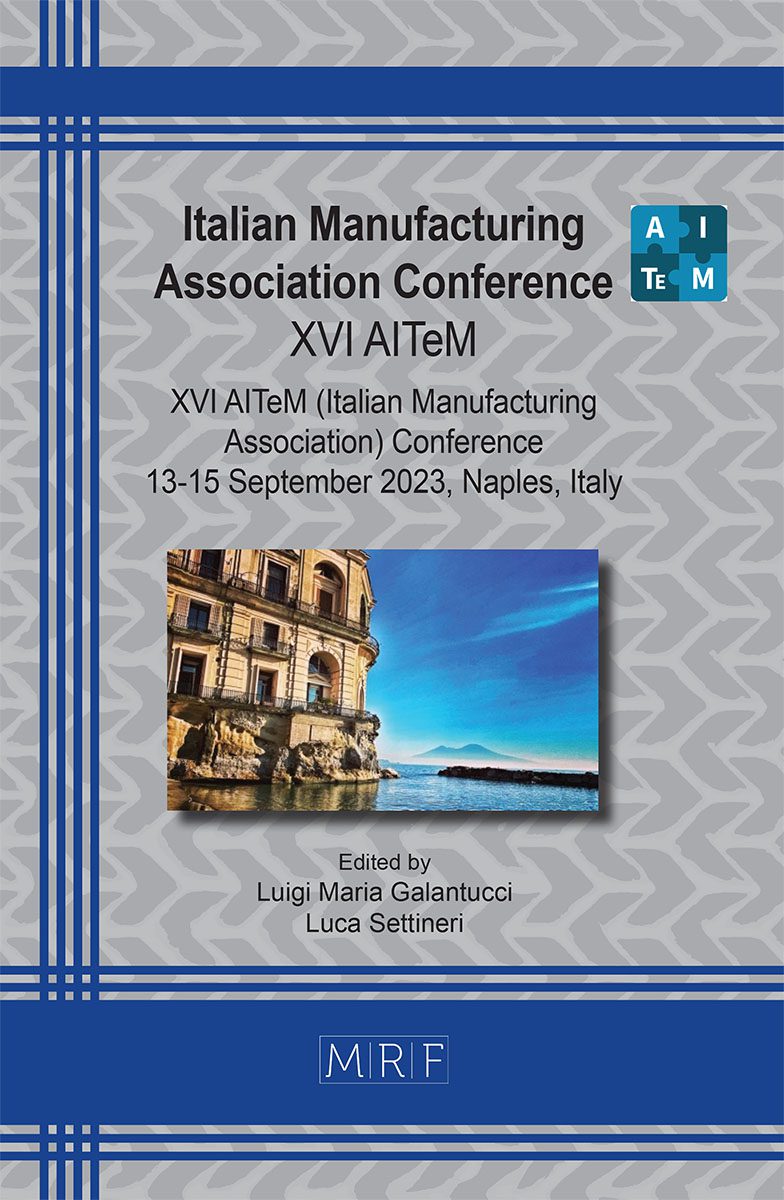Validation of charge welds and skin contamination FEM predictions in the extrusion of a AA6082 aluminum alloy
Marco Negozio, Riccardo Pelaccia, Lorenzo Donati, Barbara Reggiani, Sara Di Donato
download PDFAbstract. The reduction of scraps related to Charge Welds and Skin Contamination defects is getting an increased industrial attention in order to improve the extrusion process overall efficiency. Recently, FEM simulations allowed the prediction of these defects under different die designs or processing conditions without performing time-consuming and expensive experimental analysis. However, the validation of the FEM codes has not been fully experimentally assessed. In this paper, Charge Welds and Skin Contamination defects were experimentally analysed in the extrusion of a AA6082 aluminum alloy profile produced under strictly monitored processing conditions. The collected data were used to assess the accuracy of the predictions made by using two commercial FEM codes Qform Extrusion UK and Altair HyperXtrude. The final aim of this work is to discuss the reliability of the FEM simulations and to validate their applicability in the industrial field.
Keywords
Extrusion, Aluminum Alloy, FEM Simulation, Charge Welds, Skin Contamination
Published online 9/5/2023, 8 pages
Copyright © 2023 by the author(s)
Published under license by Materials Research Forum LLC., Millersville PA, USA
Citation: Marco Negozio, Riccardo Pelaccia, Lorenzo Donati, Barbara Reggiani, Sara Di Donato, Validation of charge welds and skin contamination FEM predictions in the extrusion of a AA6082 aluminum alloy, Materials Research Proceedings, Vol. 35, pp 86-93, 2023
DOI: https://doi.org/10.21741/9781644902714-11
The article was published as article 11 of the book Italian Manufacturing Association Conference
![]() Content from this work may be used under the terms of the Creative Commons Attribution 3.0 license. Any further distribution of this work must maintain attribution to the author(s) and the title of the work, journal citation and DOI.
Content from this work may be used under the terms of the Creative Commons Attribution 3.0 license. Any further distribution of this work must maintain attribution to the author(s) and the title of the work, journal citation and DOI.
References
[1] N. Hashimoto, Application of Aluminum Extrusions to Automotive Parts, Kobelco Technology Review 35 (2017) 69-75.
[2] J. Hirsch, Automotive trends in aluminium – The European perspective, Materials Forum 28(3) (2004) 15-23.
[3] A.J. Den Bakker, L. Katgermanc, S. Van Der Zwaag, Analysis of the structure and resulting mechanical properties of aluminium extrusions containing a charge weld interface, Journal of Material Processing Technology 229 (2016) 9-21. https://doi.org/10.1016/j.jmatprotec.2015.09.013
[4] Y.T. Kim, K. Ikeda, Flow behavior of billet surface layer in porthole die extrusion of aluminum. Metall Mater Trans A 31(6) (2000) 1635-1643. https://doi.org/10.1007/s11661-000-0173-4
[5] B. Reggiani, L. Donati, Experimental, numerical, and analytical investigations on the charge weld evolution in extruded profiles. International Journal of Advanced Manufacturing Technology 99 (2018) 1379-1387. https://doi.org/10.1007/s00170-018-2595-4
[6] A.A. Ershov, V.V. Kotov, YuN. Loginov. Capabilities of QForm-extrusion based on an example of the extrusion of complex shapes, Metallurgist, 2012, 55(9-10), p 695-701. https://doi.org/10.1007/s11015-012-9489-8
[7] P. Chathuranga. Case study of extrusion die design optimization using innovative cartridge type die, Light Metal Age, 2014, 77(5), p 20-27.
[8] N. Biba, S. Stebunov, A. Lishny, Simulation of material flow coupled with die analysis in complex shape extrusion, Key Engineering Materials, 2014, 585, p 85-92. https://doi.org/10.4028/www.scientific.net/KEM.585.85
[9] A. Hensel, T. Spittel, Kraft und Arbeitsbedarf bildsamer Formgeburgsverfahren, 1. Auflage, Leipzig: VEB Deutscher Verlag fur Grundstoffindustrie, 1978.
[10] M. Negozio, R. Pelaccia, L. Donati, B. Reggiani, T. Pinter, L. Tomesani, Finite Element Model Prediction of Charge Weld Behaviour in AA6082 and AA6063 Extruded Profiles, Journal of Material Engineering and Performance 30 (2021) 4691-4699. https://doi.org/10.1007/s11665-021-05752-x
































